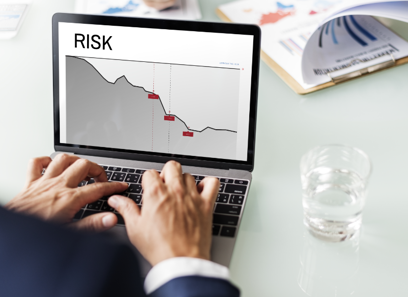Future-Proof Your Organization: Secret Cybersecurity Predictions You Required to Know
As services face the increasing pace of digital change, comprehending the progressing landscape of cybersecurity is essential for long-term strength. Predictions suggest a significant uptick in AI-driven cyber dangers, along with enhanced regulative analysis and the necessary shift towards Zero Trust fund Architecture. To successfully navigate these obstacles, companies have to reassess their safety methods and promote a society of recognition amongst workers. The ramifications of these adjustments expand past mere conformity; they might redefine the very framework of your functional protection. What actions should business require to not only adjust however grow in this brand-new atmosphere?
Surge of AI-Driven Cyber Dangers

One of the most worrying advancements is the use of AI in producing deepfakes and phishing systems that are incredibly persuading. Cybercriminals can fabricate sound and video web content, posing execs or trusted individuals, to manipulate targets right into disclosing sensitive details or licensing illegal deals. Additionally, AI-driven malware can adjust in real-time to avert detection by conventional safety and security actions.
Organizations must recognize the immediate demand to reinforce their cybersecurity frameworks to combat these advancing hazards. This consists of investing in innovative threat discovery systems, promoting a culture of cybersecurity understanding, and carrying out robust incident feedback plans. As the landscape of cyber threats changes, proactive actions become essential for securing sensitive data and maintaining business stability in a progressively electronic globe.
Enhanced Focus on Information Privacy
How can organizations successfully browse the expanding emphasis on information privacy in today's electronic landscape? As regulative frameworks evolve and customer assumptions increase, services should focus on durable data privacy methods. This includes adopting detailed data governance plans that ensure the moral handling of personal info. Organizations should carry out routine audits to assess conformity with guidelines such as GDPR and CCPA, determining possible vulnerabilities that can lead to information breaches.
Purchasing staff member training is vital, as team recognition directly impacts information security. Organizations needs to foster a society of privacy, motivating workers to recognize the significance of safeguarding delicate information. Furthermore, leveraging technology to enhance data safety is crucial. Implementing sophisticated encryption methods and secure data storage space remedies can dramatically alleviate risks connected with unauthorized gain access to.
Cooperation with legal and IT groups is vital to straighten data privacy efforts with organization objectives. Organizations must also involve with stakeholders, including consumers, to communicate their commitment to data personal privacy transparently. By Related Site proactively attending to information personal privacy problems, organizations can build trust fund and boost their online reputation, inevitably adding to long-term success in a progressively looked at digital setting.
The Change to No Count On Style
In response to the developing risk landscape, companies are significantly taking on No Trust fund Architecture (ZTA) as a fundamental cybersecurity approach. This strategy is based on the concept of "never trust, constantly confirm," which mandates continuous confirmation of individual identities, gadgets, and data, no matter their area within or outside the network boundary.
Transitioning to ZTA entails carrying out identity and accessibility management (IAM) options, micro-segmentation, and least-privilege gain access to controls. By granularly regulating access to resources, companies can minimize the danger of expert risks and decrease the influence of outside breaches. ZTA encompasses durable surveillance and analytics capacities, permitting organizations to discover and respond to anomalies in real-time.

The change to ZTA is additionally sustained by the boosting adoption of cloud services and remote job, which have broadened the attack surface area (cyber resilience). Traditional perimeter-based security models are insufficient in this brand-new landscape, making ZTA a more durable and flexible structure
As cyber hazards remain to expand in refinement, the fostering of Zero Count on concepts will be crucial for organizations seeking to shield their properties and maintain regulative compliance while guaranteeing company Get More Information connection in an unpredictable setting.
Governing Adjustments imminent

Approaching laws are anticipated to address a series of concerns, including data personal privacy, violation notification, and incident reaction protocols. The General Information Defense Regulation (GDPR) in Europe has actually set a precedent, and similar structures are arising in various other blog here regions, such as the USA with the recommended federal personal privacy regulations. These guidelines typically enforce strict penalties for non-compliance, highlighting the need for companies to prioritize their cybersecurity actions.
In addition, markets such as financing, health care, and critical facilities are most likely to encounter more strict requirements, reflecting the delicate nature of the information they handle. Compliance will not just be a lawful commitment yet a crucial component of building trust with clients and stakeholders. Organizations has to remain in advance of these modifications, integrating regulative needs right into their cybersecurity methods to make sure strength and safeguard their possessions efficiently.
Significance of Cybersecurity Training
Why is cybersecurity training an essential part of an organization's defense method? In a period where cyber hazards are increasingly advanced, companies have to acknowledge that their workers are typically the initial line of protection. Efficient cybersecurity training outfits personnel with the knowledge to recognize prospective risks, such as phishing attacks, malware, and social engineering strategies.
By cultivating a culture of protection recognition, organizations can substantially reduce the danger of human mistake, which is a leading reason for data breaches. Normal training sessions ensure that employees stay informed regarding the most up to date dangers and finest practices, thereby enhancing their ability to react properly to incidents.
Moreover, cybersecurity training promotes compliance with regulative needs, decreasing the risk of lawful effects and financial fines. It likewise empowers employees to take possession of their role in the company's protection framework, resulting in an aggressive instead of responsive method to cybersecurity.
Verdict
In final thought, the advancing landscape of cybersecurity demands positive procedures to attend to arising dangers. The increase of AI-driven attacks, paired with increased data personal privacy worries and the transition to Zero Trust fund Design, demands an extensive approach to safety and security.